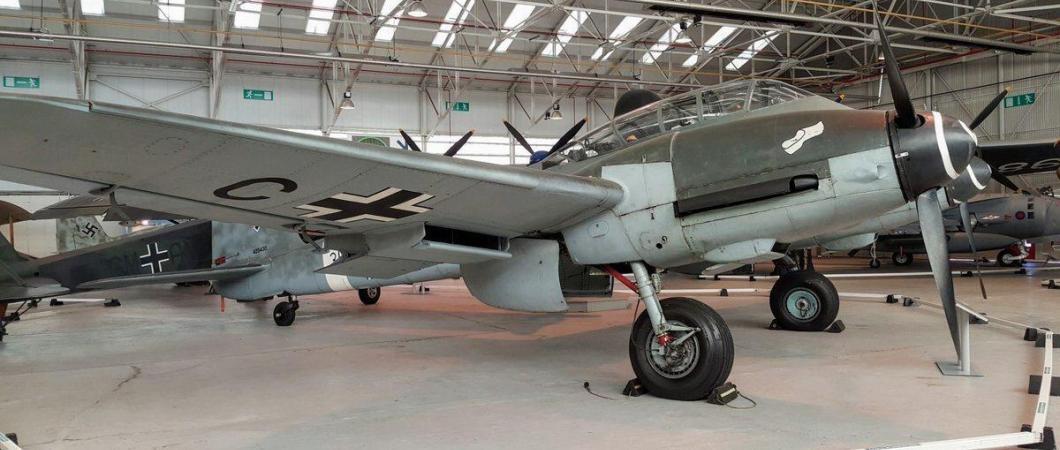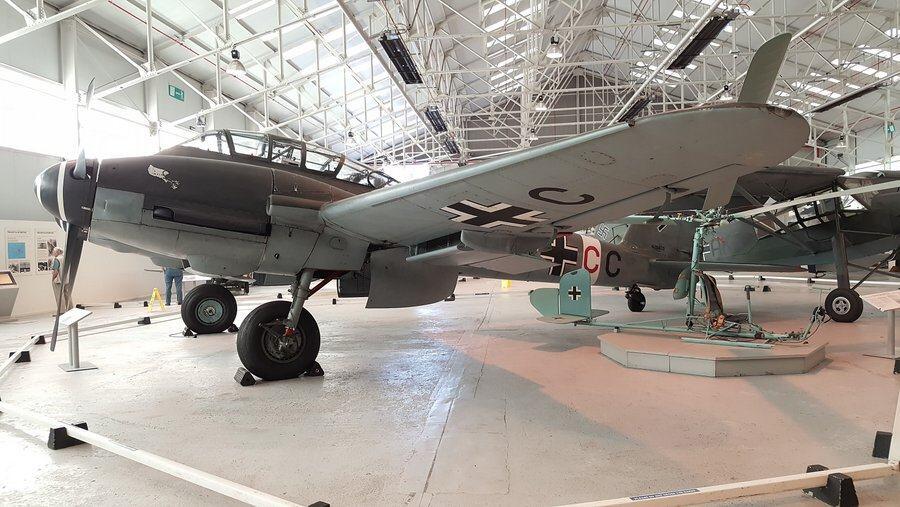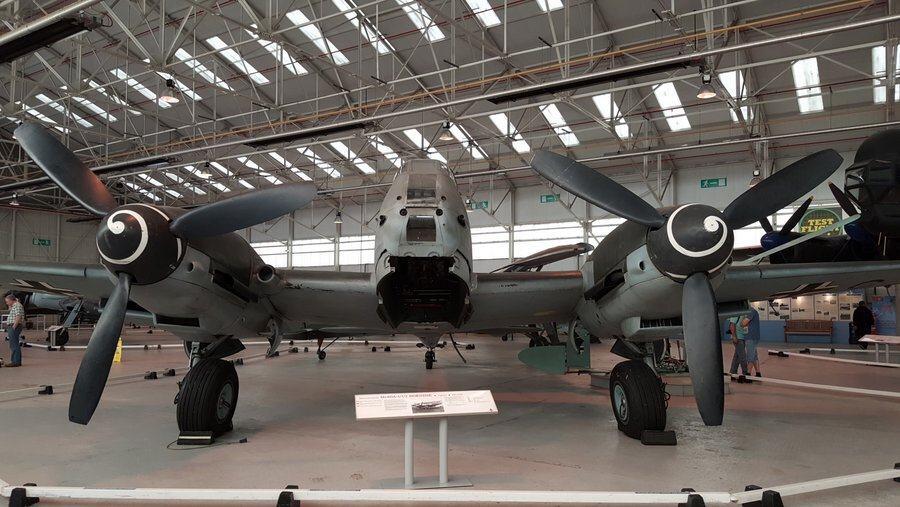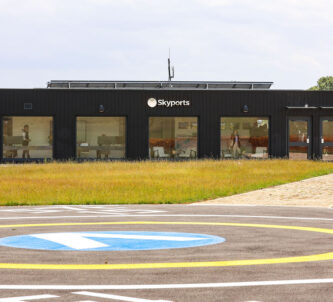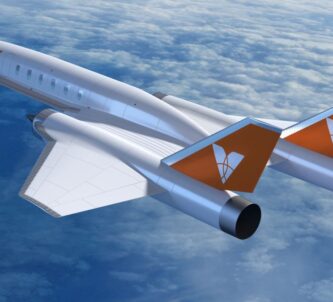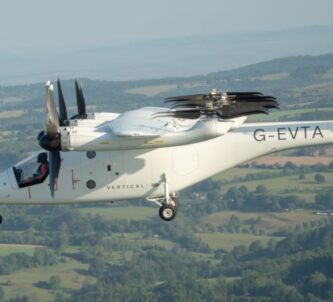I’d always been aware of the Messerschmitt 410 but had ‘parked’ it in my mind as a mostly developmental aircraft with low numbers going into production for specialised roles, and that’s the way I still thought of it when I found this one a few years ago at the RAF Cosford museum.
But recently I’ve been reading “Jimmy” Rawnsley’s account¹ of his WW2 years as an AI (Air Interception) radar operator/navigator in night fighters; Blenheims to start with, then Beaufighters, then Mosquitoes. The ME 410 went into service in Jan 1943. Rawnsley and his colleagues were warned about them at the start of the summer.
“Intelligence had warned us that we could expect the Germans to start using a new, fast, manoeuvrable two-seater fighter-bomber. This was the Messerschmitt 210, or, in its later form, the 410.It carried a pilot and a gunner-navigator seated in tandem, with the later operating by remote control two rearward-firing heavy machine guns mounted in blisters on either side of the slim fuselage. This was to be the German’s answer to the Mosquito”
…as made clear by the German name for the Me 410, the Hornisse (Hornet).
It was only a week after their intelligence briefing that Rawnsley’s squadron met up with their first ME 410. Flight Lieutenant Nigel Bunting and his radar operator/navigator, Freddie French, were flying at 20,000ft over the Straits of Dover when they were vectored by ground control onto a raider.
“Within a few minutes Freddie suddenly got two contacts on the AI, both at a range of three miles, one well below and the other above. Looking down, Nigel saw a red light but he was too experienced a hand to be drawn. That red light looked altogether too much like bait, and he decided to have a go at the higher unlighted one.”
They slowly climbed up behind the enemy and came close enough to clearly recognise the “two engines trailing bright yellow exhaust flames, with the narrow fuselage and the twin barbettes bulging on either side.”
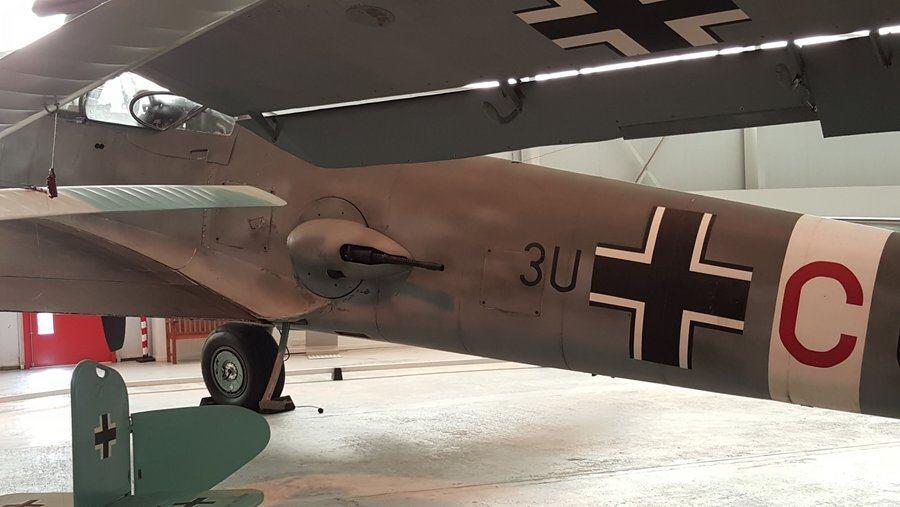
“Nigel closed in until he was two hundred yards astern, and he worked his gun onto the target Then he hit the slipstream and was put completely off his aim. He dived to recover and began to ease up into position again. The messerschmitt flew on as easily and steadily as an airliner, and the german gunner had missed his last chance. Nigel’s second aim was true and with flames streaming from the fuselage the enemy raider rolled over onto its back and dived vertically into the sea five miles off Felixstowe.”
The Me 410s were not all that easy to deal with. Rawnsley’s book covers the period of the “Baby Blitz” through the autumn of 1943 and into 1944. ME 410s were regular raiders throughout that period and were often very hard to get close to.
Some 1,160 ME 410s were built. They were mostly used as night fighter/bombers, for reconnaissance, and as fighters armed with 30mm canon & rockets against the USAF bombers attacking Germany, although they didn’t fair well against Allied fighter escorts.
So, not so ‘developmental’ at all.
¹ Night Fighter by C.F. Rawnsley & Robert Wright. Originally published 1957 by WM Collins Sons & Co. Published 1959 by Corgi Books and re-printed editions up to 1983.
[amazon_link asins=’0750916214,1591143608,1781555036,0553241273,1784382582,8365281902,B001KO0W6M,0897473205′ template=’ProductCarousel’ store=’mechtraveller-21′ marketplace=’UK’ link_id=’4b2e6ca6-bc27-11e8-98d0-3dfc03cf6ce9′]

